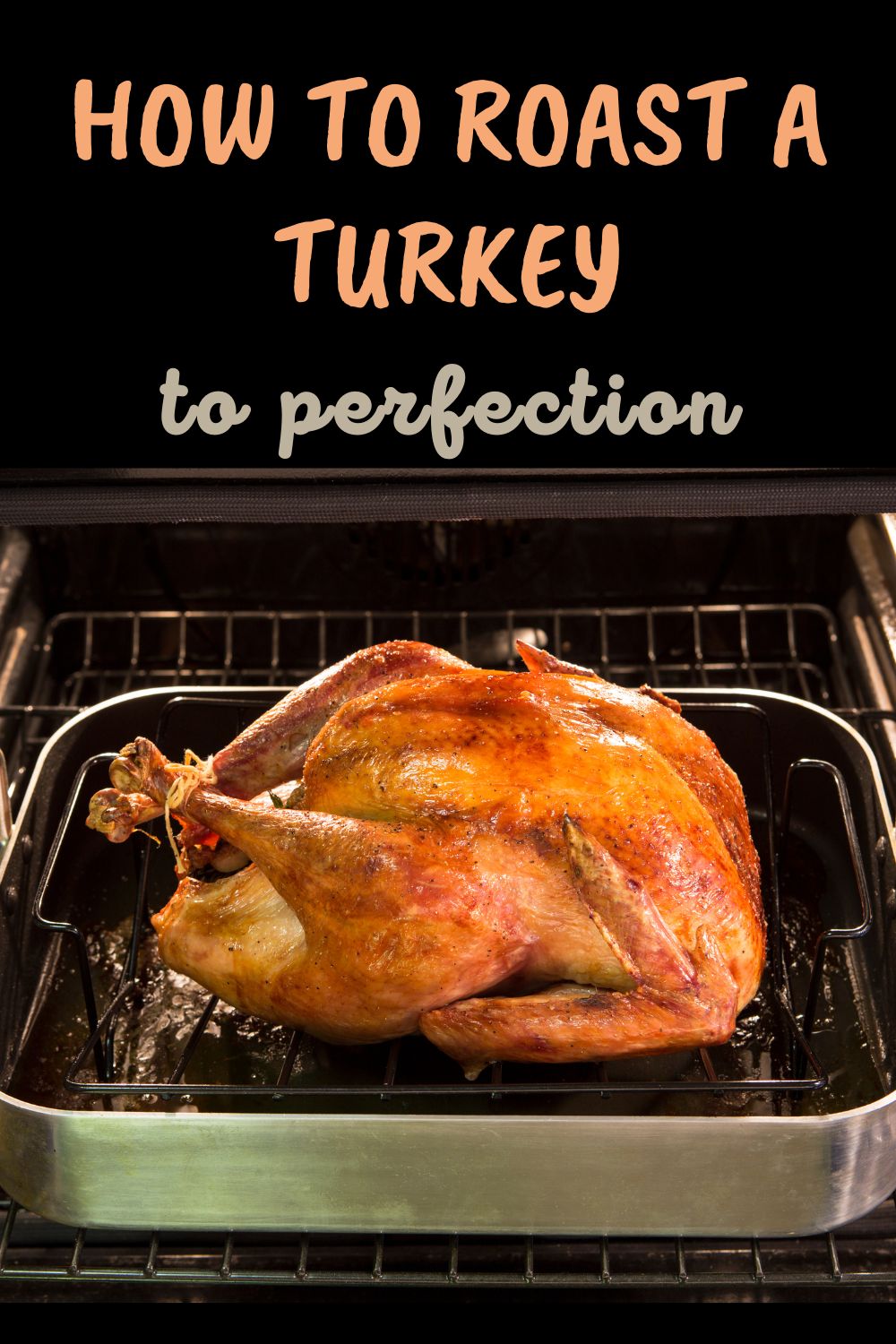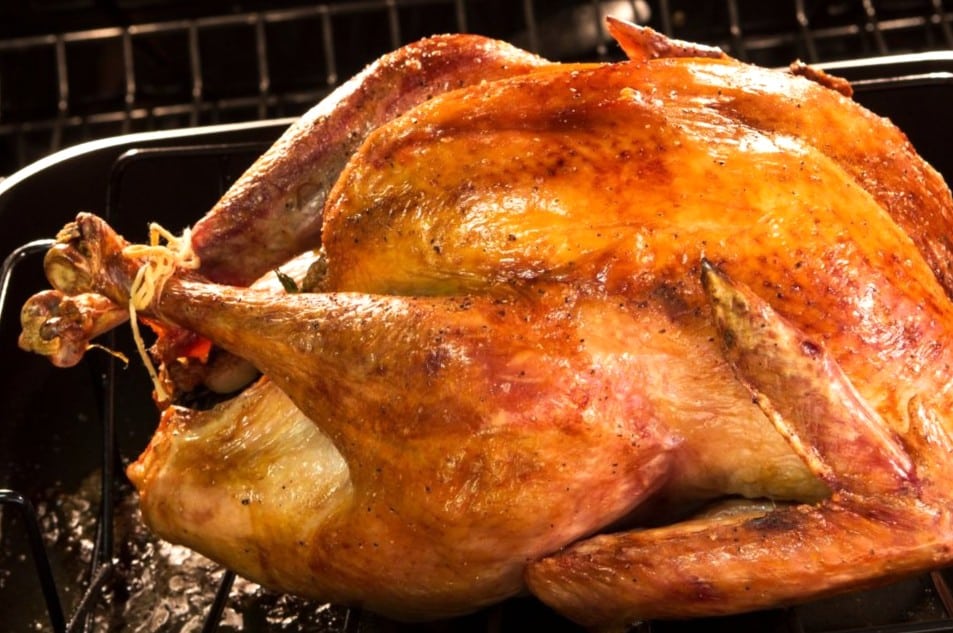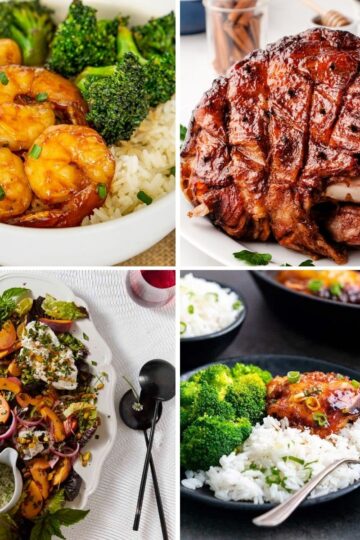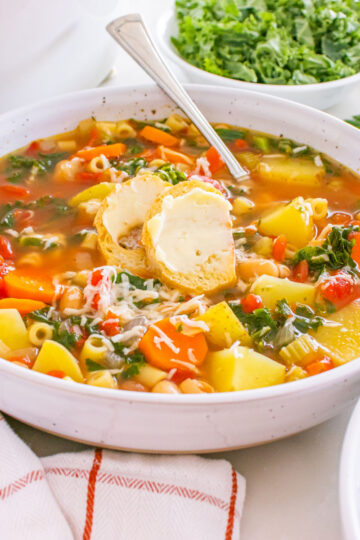Discover how to easily oven-roast a turkey with these helpful tips and guidelines. If you've never roasted a turkey before, the task can seem daunting, but I've got you covered.
When you want nice, moist, tender white meat, it's important to know how to cook the turkey correctly. Since Thanksgiving and turkey time are fast approaching, I've got all you need to know to roast your turkey in a simple roasting pan in your oven.
First, make sure the turkey is thawed and at room temperature before cooking. This will help the turkey cook evenly. You can roast a frozen turkey, but it will take longer to cool, and sometimes it can impact the evenness of the roast.
Here's how to properly defrost a turkey.
How to Roast a Turkey
Preheat your oven to 350 degrees. Then, remove the giblets from the turkey cavity and rinse the turkey inside and out with cold water. Pat the turkey dry with paper towels.
Place the turkey breast side up on a roasting rack in a roasting pan. Rub the turkey skin with olive oil or butter, then season it as desired with salt, pepper, and other spices.
Insert an oven-safe meat thermometer (try a smart thermometer for convenience) into the thickest part of the thigh of the turkey - but be careful not to touch the bone. This is going to be really important because you need to be able to monitor the cook temperature of the bird.
Roast the turkey in a preheated oven for approximately 15 minutes per pound, or until the internal temperature of the thigh reaches at least 165 degrees Fahrenheit. Cooking times will vary depending on the size of the bird and whether or not it is stuffed.
Once the turkey is done cooking, remove it from the oven and let it rest for 20-30 minutes before carving. This will allow juices to redistribute throughout the meat. If you cut it too soon and the juices run out, the turkey will be tough and chewy.
Even experienced cooks have different methods for roasting a delicious turkey, and we know that some spend the day preparing the meal only to end up with a dry turkey.
Should you stuff the turkey?
One of the first considerations when roasting a turkey is whether to stuff it or cook the dressing outside the bird. Many people like their turkey stuffed, especially on Thanksgiving, when it is a common tradition. However, there are some things to consider first. Will you be working with a frozen turkey, for one? And will you have enough time to prepare the bird with stuffing?
Stuffing the bird requires a more extended cooking period. However, the stuffing will be infused with the most wonderful turkey flavor as the juices from the roasting process flow into it.
However, more and more cooks are opting to prepare the stuffing separately from the bird because of the potential for bacteria. If you have sensitive family members or anyone who might be immunocompromised, you might opt for the safer option, just in case.
This cornbread stuffing recipe is perfect if you don't have time to cook your bird with the stuffing inside. And if you prefer your stuffing inside the turkey, try this traditional sage stuffing.
Items needed for roasting a turkey
One way to roast a turkey is in a roasting pan with a cover. Whether you stuff the bird or cook it alone, the cover prevents the juices from evaporating, and the cooking is virtually maintenance-free.
You only need to baste the bird two or three times during the cooking period. There will be plenty of juices left in the bottom of the pan you can use for flavoring the stuffing. Use the juices to make turkey gravy that is out of this world with flavor.
The cooking temperature should reach 165°F to 175°F for a well-done bird. Cook the bird at 325 degrees. Slow roasting will give your bird more flavor and prevent it from drying out. Juices are contained in your turkey by basting but a covered roasting pan is recommended to keep the juices from evaporating.
Covering the bird allows the flavor, caught in the steam, to settle back into the bird. Place the bird on a rack in the roasting pan to prevent it from sticking to the bottom.
Tips for roasting turkey to perfection
Years ago, a certain aluminum foil manufacturer taught us how to place the turkey in a pan and cover it with a foil tent, shiny side down.
The tent keeps most of the moisture in the turkey. The reflective foil allows it to take on a beautiful roasted brown appearance. However, the meat requires frequent basting and can dry out quickly. If you don't own a roasting pan, this is a tried and true method that yields good results.
Some families prefer the taste of turkey breasts and choose them over a whole turkey. If you have one available, a rotisserie works wonderfully well for turkey breasts. If you don't have a rotisserie, use a smaller roasting pan and a tight cover that will keep the juices from escaping.
Since turkey breasts are very lean, they don't produce as much juice as a whole turkey. If you use a rack, place a little water in the bottom of the pan to keep the moisture level.
The truth is, there is almost no way to ruin a roast turkey as long as you keep the moisture in the bird.
You can roast it in the oven, in a covered barbecue grill, or over an open fire. However, there are basic preparation steps that are important for those preparing a turkey before it goes into the oven or over the fire.
Use the right rub when roasting a turkey!
The turkey should be completely thawed before cooking. Wash it thoroughly, both inside and out, and then gently pat it dry. You can use butter or oil to coat the turkey before seasoning it with salt or Kosher salt, if you prefer. Some people use unsalted butter and fresh herbs to make a rub for their turkey.
If you prefer a bolder taste, consider using a rub. Many of these rubs can be bought ready-made. When you want nice, crispy skin, the rub or seasoning you use on it can also be essential.
Roasting a turkey can be a labor-intensive process or a relatively easy one. What will it be for you?
Roasting pans do most of the work for you, requiring little basting or constant monitoring. That gives you more time to coordinate the rest of dinner and bring it all to a harmonious completion at dinnertime.
More Help for Preparing and Cooking Turkey
- Hot to cook a turkey - a complete guide
- How to smoke a turkey in a gas smoker
- How to cook a turkey in an electric roaster
- How to smoke a turkey
Whatever method of roasting you prefer, add some love to the seasonings and your family will delight in the wonderful meal you've prepared. I bet they'll taste the love you put into the succulent roast turkey you present to them. When you want your turkey to be a memorable experience, take the time to plan accordingly, prep your bird with the right dry brine or rub, allow proper cooking time for the perfect roast, and then serve up with all your favorite fixins'!








